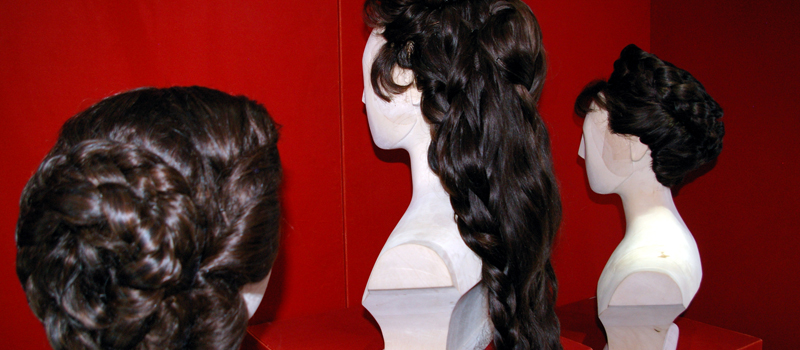 |
| Sisi in the 'star dress' |
The 'Sisi Legend' is big in Austria; she is a bit like a 19th century Princess Diana, though the Sisi Cult grew up after her death. She managed, with admirable eccentricity, to get through life in reasonable obscurity -- for an Empress. In the 1950s she was unearthed by Hollywood and some rather saccharine films made about her starring Romy Schneider.
She was the Empress Elizabeth (1837 - 1898), wife of Emperor Franz-Josef I of the Austro-Hungarian Empire. It is sometimes remarked upon that she was a cousin of "Mad" King Ludwig of Bavaria, but her interesting life could be considered entirely reasonable too.
She was married off at 16 to Franz-Josef (another cousin), the Hapsburg Emperor of Austria, and dutifully produced several children, including a son and heir, Crown Prince Rudolf. Having fulfilled this duty, Sisi decamped to Madeira for two years, citing ill-health. She came back thoroughly blossomed - being away from the Court and husband evidently suited her - and around that time was painted gorgeously by Franz Winterhalter. However, Sisi still hated the stuffy Court routine and her lack of freedom, and set out to wander Europe as she wished. She had a beautiful private rail salon in which she traversed here and there at great expense, more or less abandoning the raising of her children to her mother-in-law.
 |
| That hair! |
The Emperor and Empress were estranged for most of the rest of their lives, although a brief reconciliation in 1867 resulted in another daughter, to whom Sisi became quite close. Sadly, their son the Crown Prince committed suicide, and after that Sisi wore only black and continued trailing around Europe under a pseudonym, riding horses and writing poetry. She became known as 'the lady in black'.
 |
| The picture Franz-Josef kept in his study. |
This site has many pictures of Sisi, who was painted often in her life - she was indeed a great beauty.
In fact, Sisi was known for her "cult of beauty" - she took great pains to preserve her health and looks, and installed gym equipment in her private apartments in the Hofburg Palace in Vienna (you can still see it today). She was also an excellent horse-woman, riding dangerously in the hunt in England and Ireland. She believed in exercise and face creams (but not make-up), and watching her diet (though she was partial to Viennese pastries). She maintained all her life, with the help of severe corsets, a 50 cm waist; and of course, the glorious hair.
 |
| A variety of Sisi hairstyles displayed in Vienna's Sisi Museum. |
I put it down to the hair.
No comments:
Post a Comment